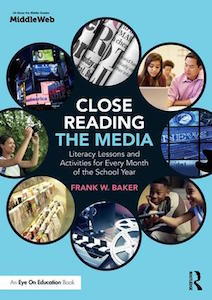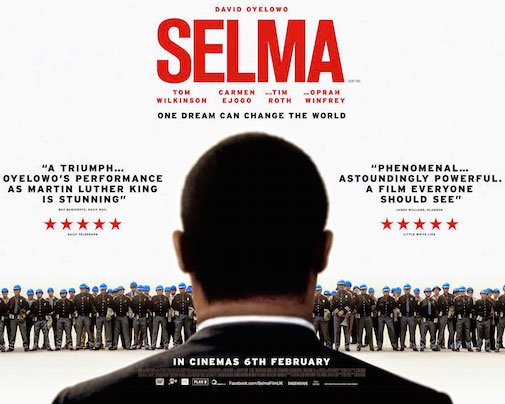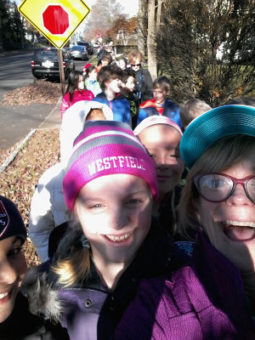Based on a True Story: History vs Hollywood
A MiddleWeb Blog
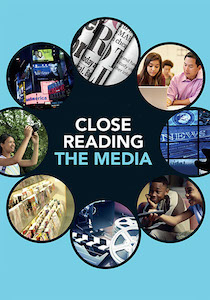 If you’re a fan of the movies, then over the past several years you’ve surely seen a film or two that begins with the phrase “Based on a true story” projected onto the screen.
If you’re a fan of the movies, then over the past several years you’ve surely seen a film or two that begins with the phrase “Based on a true story” projected onto the screen.
Many of us, and our students, believe we’re seeing the story close to how it actually happened – but that is never the case.
Examining the differences between the movie and the real story, and the processes that screenwriters use to adapt a true story, is worthy of some media literacy classroom time.
Often times we expect a movie based on a true story to be exactly like the book (or historical events) from which it was derived. If we happen to have a lot of personal knowledge about the story, then we are likely to be disappointed.
My opinion is: the movie will never be like the book. We should stop expecting it to be. Movie production requirements and the process of story adaptation mean quite a few compromises will be made. In the business vernacular, it’s called creative or “artistic license.” The screenwriters are under no obligation to retell the story exactly the way it happened. And so, they don’t.
New York Times film critic Cara Buckley opines: “Filmmakers and cineastes have talked themselves blue about the need for creative license when casting a version of the truth onto the big screen. Cinematic historical fiction should not, this argument goes, be taken as faithful history lessons. Time must be compressed, characters created and lost, drama injected, events synthesized.” (Source)
From Page to Screen
In Adaptation: Studying Film and Literature, the authors write, “one explanation for the difference between literature and film is that the text’s verbal language and the film’s pictorial and aural languages have distinct qualities that prohibit the exact replication of a text on screen.”
In other words, film is a unique medium and filmmakers understand how to use certain techniques to imply meaning. (Do your students recognize these techniques when watching a film?) For more advice, be sure to see my previous column on this topic as well as my Language of Film website for a full explanation.
Books inspire you to think visually while film speaks visually and through various effects to make you feel something. As a rule of thumb: books should make you think, films should make you feel.” – Screenwriter Chris Weigl at Quora.
The “fight” over which is better, the book or the movie, will never go away. TIME magazine gathered some film critics to discuss this very issue. And their conclusion: “Almost any novel’s plot must be compressed into a black hole of incident and image. Then there’s the challenge any movie faces of putting thoughts into words, emotions into gestures, descriptions into actions. And always the adapters must worry not just about satisfying those persnickety readers but also about pleasing the audience ignorant of the book.” (Source)
Movies based on true stories are experiencing a surge in popularity. In just the past year or two, there have been dozens, including Sully, War Dogs, Jackie, Snowden, Queen of Katwe, Loving, Hacksaw Ridge, Birth of a Nation, Lion, Denial, Deepwater Horizon, Southside With You, LBJ, All the Money in the World, Masterminds, American Made, Marshall and Bleed For This. A Winston Churchill biopic, Darkest Hour, received the 2018 Golden Globe Award for Best Actor in a Drama (Gary Oldman) and some criticism for its fabrications.
Films based on popular books often have a long shelf life, and watching the adaptation may lead a film fan back to the original work. Thus film can also be a catalyst for our students to read the text and to consider those qualities that make each medium unique.
Many educators are already familiar with both fiction and nonfiction adaptations, having used everything from Because of Winn Dixie, to Twilight and To Kill A Mockingbird, just to name a few. The recent film Wonder prompted many middle school classes to make a special trip to theatres to see and compare the Hollywood version to the now YA book classic. I’m sure you and your students can name many more.
The Common Core ELA Reading Literature standards encourage teachers to engage students in adaptations by analyzing important elements:
Grade 7 – Compare and contrast a written story, drama, or poem to its audio, filmed, staged, or multimedia version, analyzing the effects of techniques unique to each medium (e.g., lighting, sound, color, or camera focus and angles in a film) (Source)
Grade 8 – Analyze the extent to which a filmed or live production of a story or drama stays faithful to or departs from the text or script, evaluating the choices made by the director or actors. (Source)
Not Everyone Is Pleased With Adaptations
One notable recent example of a film “based on a true story” is Hidden Figures — the 2016 theatrical release which tells the story of three African-American women mathematicians who worked for NASA at a time when being black and smart was not fully appreciated. The movie was nominated for three Oscars, including Best Adapted Screenplay.
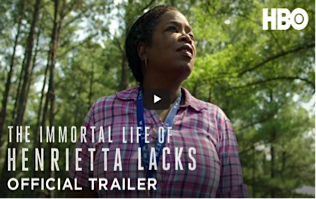
Both Hidden Figures and The Immortal Life of Henrietta Lacks began as books that screenwriters “adapted” – used as starting points – to write their scripts. And book lovers aren’t the only ones who can be upset over how a film is translated.
In the case of the Henrietta Lacks film, her family has been quite vocal about what it saw as misrepresentations. Lacks’ oldest son Lawrence issued a press release challenging what he said were inaccurate and racist portrayals of the family. According to reports, Lack family members were invited to be advisors on the film but turned down the invitation. Oprah Winfrey says Lawrence’s son told her he did not like the way his grandmother was portrayed as being poor. Winfrey insisted that her interpretation of the story was that of a middle-class working family “striving to make a living every day.” (Source)

Katherine Johnson (played by Taraji P. Henson) calculates orbital insertion trajectories in this scene from Hidden Figures.
Sometimes authors are not happy with the way their stories have been adapted. But that is not the case with the author of Hidden Figures. In a recent interview with SCRIPT magazine, author Margot Lee Shetterly said that the screenwriters “made the decision to focus on one part of the story which is the moment where Katherine Johnson calculates the trajectory of John Glenn. Obviously, it’s a very cinematic impactful moment. And because of that, they had to collapse some of the timelines and deflate some of the characters to make the narrative work.
“It’s true that there are some things that are different, but I think the spirit of the women and the portrayal of them as very strong, very smart protagonists are very accurate. I’m very happy with it.”
History vs. the Movies
So it’s clear that when a book’s rights have been acquired by a motion picture studio, many different people will have expectations of how that story will look on the big screen. Some of those people will be pleased with the adaptation, others will not.
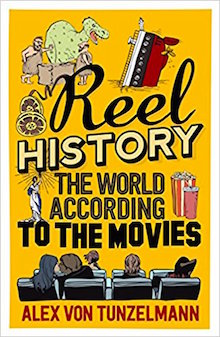
Our students are exposed to many fact-based films, both inside and outside the classroom. Teachers love to use these texts to engage students in thoughtful conversations about narrative, plot, mood, characters and much more. These conversations need to be expanded to include an understanding of the languages of film (dialogue, sound and special effects, music, costuming, etc.), as well as the alterations made by filmmakers using their artistic license. Then and only then will we perhaps stop asking: “why wasn’t the movie more like the book?”
Recommended Resources
Website
History vs Hollywood reviews many films for historical accuracy. See for example the site’s take on The Post, a new flim about the Washington Post’s decision to publish the Pentagon Papers.
Article
“What are the reasons that a screenwriter changes the plot of a book when adapting it for a movie?” (Quora)
Books
Reel History: The World According to the Movies (Atlantic Books)
Adaptation: Studying Film and Literature (McGraw Hill)
Film and Literature: An Introduction (2nd Ed., Routledge)
History by Hollywood (University of Illinois Press)
____________________
